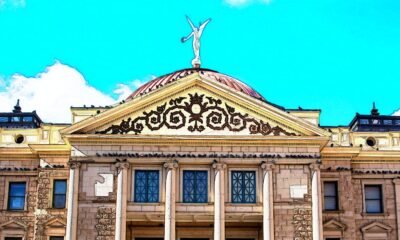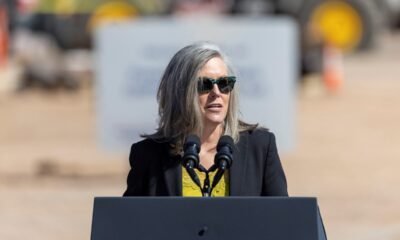American Rescue Plan Act
TOM PATTERSON: Can We Break the Welfare Dependency Cycle Before Fiscal Crisis Strikes?

By Dr. Thomas Patterson |
Recent reports, including a piece by the Wall Street Journal, spotlight the economic revival in Terre Haute, Indiana, a once-declining manufacturing hub. Thanks to funding from the 2021 American Rescue Plan Act and the 2022 Inflation Reduction Act, the city experiences an unprecedented surge in infrastructure projects, prompting its mayor to struggle to keep track on his whiteboard.
New factories are taking shape, home construction has tripled, and previously vacant properties are being revitalized. Among notable projects, the historic Charlie’s Pub and Grub is slated for renovations. This local resurgence reflects broader federal initiatives, channeling hundreds of billions into manufacturing, housing, and clean energy under the Biden administration.
However, a crucial question remains unanswered: Where does this funding originate? While many might instinctively point to taxpayer contributions, the reality is less straightforward. The U.S. government is projected to spend $2 trillion more than its annual revenue. Thus, there are no surplus tax funds to facilitate such distributions.
The current spending model relies heavily on borrowing, placing the debt burden on future generations who have yet to vote. The ethos of personal responsibility appears diminished in today’s climate, with an expectation that the government will alleviate any hardships. Earlier generations might have viewed such a massive fiscal expansion with alarm, rather than optimism.
Government efficiency is often called into question, especially when considering the ‘free’ services offered carry hidden costs. Despite this, the U.S. economy has indicated a revenue growth of 1.4% since 2001, the last year the budget was balanced. Unfortunately, fiscal discipline has waned, leading to spending growth of 3.0% annually, adjusted for inflation.
Consequently, the Congressional Budget Office projects continued spending exceeding revenues without reforms. The national debt has ballooned to an astounding $36 trillion, accompanied by rising borrowing costs. This creates a precarious fiscal situation where interest payments on the debt now overshadow total defense expenditures.
Fifty percent of the federal budget is allocated to interest payments, revealing a grim cycle where the government borrows to cover existing debt costs—a phenomenon often referred to as the Doom Loop. Many families, businesses, and local governments have come to rely on these federal subsidies, with over 75% of the federal budget supporting such expenditures.
The prospect of fiscal recovery raises questions about potential leadership. Could former President Donald Trump emerge as a savior in this crisis? Addressing issues such as raising the retirement age for Social Security could be a step in the right direction. Trump’s prior support for budget cuts offers a glimmer of hope, but tackling the entrenched entitlement programs remains critical for balancing the budget.
Entitlement spending, often deemed ‘mandatory,’ hinges on Congressional discretion and can be amended as needed. Regrettably, Trump has focused more on the easier targets, like government fraud, rather than the substantive reforms required in entitlement spending. Absent bold leadership, programs like Social Security and Medicare are likely to remain untouched—an area where many budget hawks fear to tread.
The challenge of fiscal reform grows increasingly complex with time. The path ahead is fraught with difficulties, yet it is imperative for the future of the nation’s economy.
Dr. Thomas Patterson, former Chairman of the Goldwater Institute, is a retired emergency physician and served as an Arizona State senator for ten years during the 1990s, holding the position of Majority Leader from 1993 to 1996. He is the author of Arizona’s original charter schools bill.


















